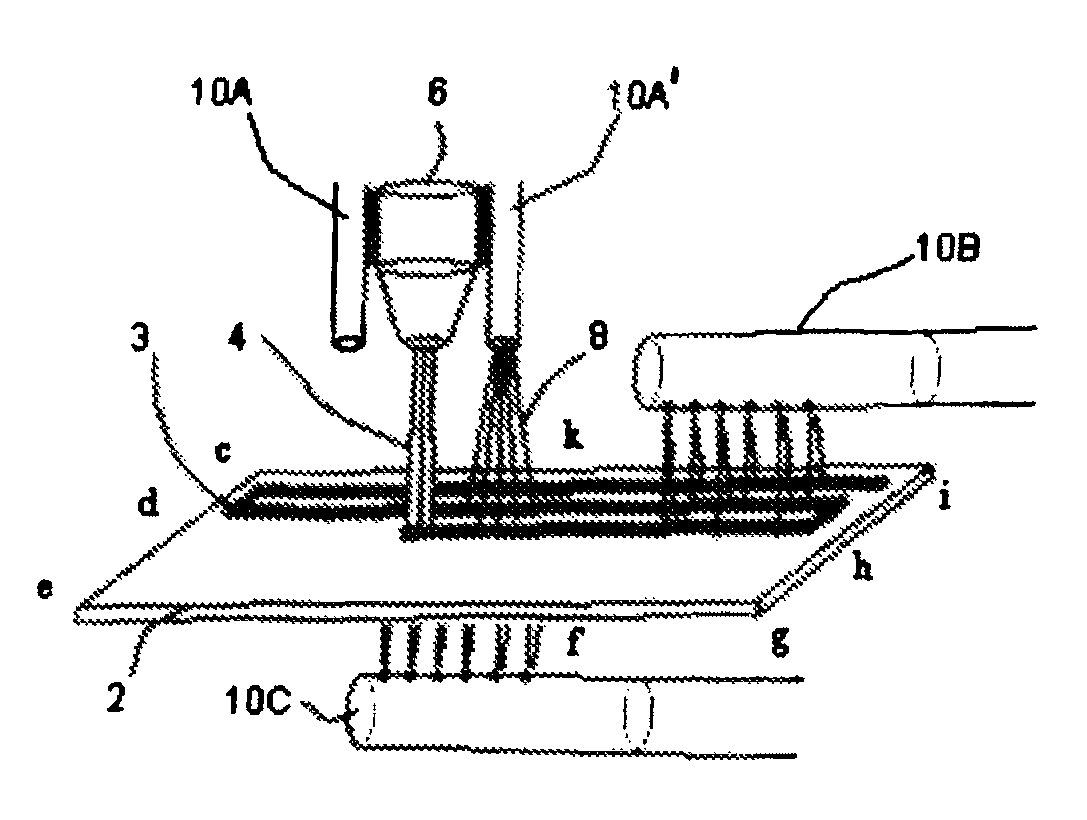Treatment method, system and product
a treatment method and system technology, applied in heat treatment furnaces, heat treatment apparatuses, furnaces, etc., can solve problems such as thermal degradation, damage to thermal stresses, overheating of coating and workpieces, etc., to achieve reliable thermal measurement, reduce internal stresses, and excellent production rates
- Summary
- Abstract
- Description
- Claims
- Application Information
AI Technical Summary
Benefits of technology
Problems solved by technology
Method used
Image
Examples
example 1
[0109]The purpose of this example is to more fully explain the control parameters enumerated in the description of the process steps shown in FIG. 6. FIGS. 4, 5 and 6 are used to facilitate the description.
[0110]FIG. 4 illustrates a thermal deposition process employing a workpiece 40 comprised of a workpiece substrate surface 41 which has cylindrical shape and which is rotated during the thermal deposition coating process. The workpiece (RW) comprised of workpiece substrate surface 41 is mounted in a remotely actuated, rotating holder (RWA) 42, and exposed to hot coating deposition material 46 from the thermal deposition head (TCD) 44 which, in turn, traverses over the workpiece surface by the means of a separate actuated holder (TCDA). Traversing in sync with thermal deposition head 44 is an elongated, cryogenic coolant distributor (SCMD) 48 which provides the cooling effect either to the coated only portion of the substrate 41 or to the uncoated and coated portions of the workpiec...
example 2
[0119]FIG. 3 is a view of a thermal deposition process employing, optionally, both traversing and stationary cryogenic coolant delivery systems for the workpiece. Common pieces of equipment to those shown in FIG. 1 are similarly numbered. In showing a method for establishing cooling in the thermal deposition coating operations using a cryogenic gas coolant media, one or more coolant means 10A, 10A′, 10B and 10C provide a coolant 8. These coolant means, such as 10A, 10A′ may move with thermal deposition head 4, move as the distributor 48 shown in FIG. 4 moves, or remain stationary. Cooling the top side of the workpiece, that is the surface of the workpiece to be coated, where the heat is deposited with coating material is more desired than cooling the back side of the workpiece because of the resultant stress distribution. Of course, cooling the top side of the workpiece surface, whether the cooled portion of the surface was already coated or not, is more difficult. In one embodiment...
example 3
[0121]Industrial tests of the present system and method were carried out during HVOF spray coating operation involving WC-Co coating material. The HVOF gun was spraying 45 grams of WC-Co powder per minute at an elongated, rotating airplane landing gear component made of high-strength steel. The surface speed of the rotating component was 150 ft / minute, the gun traverse speed along was ⅛-inch per each revolution, the distance between the gun nozzle and the component surface was about 9 inches. The HVOF flame was hydrogen-oxygen, with the hydrogen flowrate of 1525 standard cubic feet per hour at 150 psig supply pressure, and the oxygen flowrate of 475 standard cubic feet per hour at 165 psig supply pressure. Four cryogenic fluid nozzles were more or less uniformly positioned along the axis of the rotating component at the distance of about 4 inches from its surface. The nozzles were discharging a 2-phase mixture of cryogenic nitrogen vapor and fog-size droplet spray toward the surface...
PUM
| Property | Measurement | Unit |
|---|---|---|
| Thickness | aaaaa | aaaaa |
| thicknesses | aaaaa | aaaaa |
| temperature | aaaaa | aaaaa |
Abstract
Description
Claims
Application Information
 Login to View More
Login to View More - R&D
- Intellectual Property
- Life Sciences
- Materials
- Tech Scout
- Unparalleled Data Quality
- Higher Quality Content
- 60% Fewer Hallucinations
Browse by: Latest US Patents, China's latest patents, Technical Efficacy Thesaurus, Application Domain, Technology Topic, Popular Technical Reports.
© 2025 PatSnap. All rights reserved.Legal|Privacy policy|Modern Slavery Act Transparency Statement|Sitemap|About US| Contact US: help@patsnap.com



